Books
| Book cover image | Title and description | Price |
|---|---|---|
 |
A Yupiaq Worldview 2nd Edition In a call to unite the two parts of his own and modern Yupiaq history, Kawagley proposes a way of teaching that incorporates all ways of knowing available in Yupiaq and Western science. He has traveled a long journey, but it ends where it began, in a fish camp in southwestern Alaska, "a home for his heart, mind, and spirit." |
Available at Waveland Press |
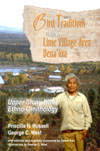 |
Bird Traditions of the Lime Village Area Dena'ina Russell and West present us with a unique opportunity to experience the cultural traditions of how a population of Alaska Native peoples relate to birds. |
$15.95 |
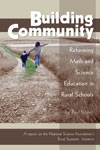 |
Building Community: Reforming Math and Science Education in Rural Schools A report on the National Science Foundation's Rural Systemic Initiative. |
$10.00 |
 |
Conflicting Visions in Alaskan Education revisited A glimpse of the intellectual history of educators in Alaska, and English teachers in particular. It is about the life and work of two men: John Veniaminov and Sheldon Jackson. |
$4.95 |
 |
Howard Luke: My Own Trail Howard tells his story of early childhood experiences, the influence his mother had upon him, and people and events that shaped his adult life as well as his vision for a bright future. While this book is enjoyable reading for everyone, it is a valuable resource for people who consider the Tanana Valley their home. Howard Luke: My Own Trail comes with a foldout 18" x 24" map of the area between Fairbanks and Nenana that Howard calls home. |
$16.95 |
 |
IÑUKSUK: Northern Koyukon, Gwich'in & Lower Tanana 1800-1901 The history of the Northern Koyukon, Western Gwich'in and Lower Tanana was kept by storytellers for over a hundred and fifty years. This is a fascinating account of their history taken from written records of the early explorers, traders and missionaries and the oral tradition of the Alaska Native peoples themselves. |
$15.95 |
 |
Tlingit Moon & Tide This book brings an understanding of science and ecology to the elementary classroom, by showing teachers how to present local and ecosystem knowledge held by longtime inhabitants of Southeast Alaska. Native knowledge has an increasingly important role, as mainstream America comes to terms with our dependence on a healthy Earth. |
$10.00 |
 |
Will the Time Ever Come: A Tlingit Source Book In 1993 the Tlingit tribes and clans convened a landmark conference in Haines, Alaska that brought Native peoples from Alaska and Canada together with scholars of their language, history and culture to exchange information and develop a collaborative agenda for future research and policy initiatives. This volume represents the fruits of that unique exchange and collaboration. |
$10.00 |
 |
Yuuyaraq: The Way of the Human Being Occasionally an author takes bits and pieces of information that many people are more or less familiar with and puts them together in a way that offers new possibilities for understanding events around us. The focal point in Harold Napoleon's Yuuyaraq is such a discussion. It is about the initial effects and continuing impact of the epidemics that afflicted Alaska Natives from the 1770s through the 1940s. |
$5.95 |
 |
Village Math by Alan Dick 2012 Village Math is unique in that it introduces math to young people in a culturally-relevant way using scenarios found in everyday life in Alaska's rural areas. The target audience is middle school, but many of these problems apply to older and younger students as well. |
$10.00 |
 |
Alaska Native Science: A Curriculum Guide by Dolly Garza 2011 This curriculum handbook and the accompanying CD from the Common Knowledge radio series introduces the reader to the creative potential of bringing multiple knowledge systems to bear in our understanding of the world around us. |
$10.00 |
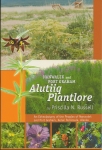 |
Alutiiq Plantlore: The Nanwalek and Port Graham Alutiiq of Alaska use many of the plants that grow in their country. They have a rich cultural heritage in which they deserve to have pride. This book contains detailed documentation of their ethnobotanical knowledge. |
$10.00 |
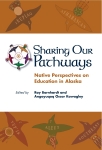 |
Sharing Our Pathways: Native Perspectives on Education in Alaska Edited by Ray Barnhardt and Angayuqaq Oscar Kawagley 2011 The essays contained in this compendium were assembled from a collection originally published in the Sharing Our Pathways newsletter, which was issued bi-monthly over a period of ten years (1996–2005) under the auspices of the Alaska Rural Systemic Initiative.The essays contained in this volume were produced as an outgrowth of the many initiatives implemented by the staff and Elders associated with the AKRSI. |
$20.00 |
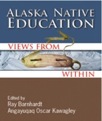 |
Alaska Native Education: Views From Within Edited by Ray Barnhardt and Angayuqaq Oscar Kawagley 2010 The authors of the essays contained in this volume seek to identify the limitations of the existing system of education and offer alternative views that point toward the revaluation of local knowledge and ways of knowing, with emphasis on blending old and new practices that address the contemporary needs of Alaska Native people, and in so doing, benefit all people. |
$20.00 |
 |
The Adventures of Yaabaa Teeshaay: First Man Stories from Healy Lake As Told by Ellen Demit and David Joe, edited by Constance Ann Friend 2010 The Adventures of Yaabaa Teeshaay provides a window into ancient wisdom. The late Ellen Demit belonged to a time when storytelling was still commonly practiced. Connie Friend has documented as much as Ellen (then in her nineties) could recall. Irene Arnold, a Tanacross language specialist, and linguist Thoman translated the Athabascan and transcribed it into Healy Lake Tanacross. |
$10.00 |
 |
Evelyn Alexander: A Life History in Her Own Words Evelyn Alexander's life story gives us a glimpse into a way of life in Interior Alaska that is gradually fading from memory as those who experienced it first hand pass on. In collaboration with Joshua Weiser, Evelyn describes her experiences growing up in the Minto Flats area and how the demands of day-to-day living forged a close relationship to the land and to those she shared her life with. |
$10.00 |
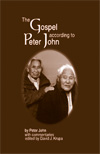 |
The Gospel According to Peter John The words in this book carry some of the spoken wisdom of one of Alaska's great human resources—Athabascan (Doyon) Chief Peter John of Minto. His life chronicled not only the old ways of his people, but also the rapid and often tragic changes in Native life stemming from the sudden influx and dominance of Euroamerican people, culture and values in this century. |
OUT OF PRINT |
 |
Gwich'in Native Elders In this study, Shawn Wilson examines the role, characteristics, and needs of Gwich'in Native elders of Fort Yukon, Alaska. Using participant observer and ethnographic methodologies, the researcher was able to make a distinction between respected elders and the elderly. Through the literature reviewed, it was established that strong healthy elders are essential in the healing of their communities. |
OUT OF PRINT |
 |
Alaska Science Camps, Fairs & Experiments A three-part volume offering instruction on how to host science camps and fairs. Also includes an abundant source of science experiment ideas relating to life in Native and rural Alaska villages. |
$10.00 |
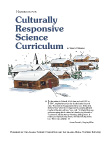 |
Handbook for Culturally Responsive Science Curriculum Excerpt: "The information and insights contained in this document will be of interest to anyone involved in bringing local knowledge to bear in school curriculum. Drawing upon the efforts of many people over a period of several years, Sidney Stephens has managed to distill and synthesize the critical ingredients for making the teaching of science relevant and meaningful in culturally adaptable ways." |
$10.00 |
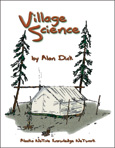 |
Village Science Resource handbook for rural Alaskan teachers. Contains ideas on how to demonstrate some basic science concepts as they relate to village life. |
$10.00 ea. student edition only available. |
 |
K'aiiroondak: Behind the Willows K'aiiroondak in the Gwich'in language means "something behind the willows." In the north country willows often grow in areas that were once cleared for settlement. When viewed from the river, the willows screen any sign of human inhabitation. Yet, these places were home to many and still live in the memory of a few. Trade and life prospered along the Porcupine until after World War II. But by the early 1950s, the settlements of the Porcupine were deserted or inhabited only seasonally. Richard Martin's stories bring back this busy time in Alaska history. |
$15.00 |
 |
Sharing Our Pathways Newsletters Beginning with Volume 10, Issue 4 (Fall 2005), we began distribution of the Sharing Our Pathways newsletter via email only. We no longer publish in print. We've also made it available to you here online. If you are interested in receiving our newsletter via email, send a message to the Alaska Native Knowledge Network. |
FREE + Shipping |







